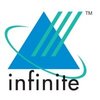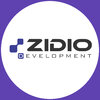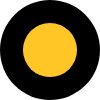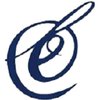UI UX and Graphic Designer
50+ UI UX and Graphic Designer Interview Questions and Answers
Asked in 0TO1 Media

Q. What is the difference between Bootstrap design and Design systems?
Bootstrap is a front-end framework while design systems are a collection of reusable components and guidelines.
Bootstrap provides pre-designed UI components and layout templates
Design systems are a set of guidelines and reusable components for consistent design
Bootstrap is limited to its pre-designed components while design systems can be customized and expanded upon
Design systems are more comprehensive and cover all aspects of design including branding, typography, and color...read more
Asked in 0TO1 Media

Q. What Prototyping tools are used in UI/UX?
Prototyping tools commonly used in UI/UX include Sketch, Adobe XD, Figma, InVision, and Axure.
Sketch is a popular vector graphics editor with a focus on UI design.
Adobe XD is a vector-based design tool that allows for prototyping and collaboration.
Figma is a cloud-based design tool that allows for real-time collaboration and prototyping.
InVision is a prototyping tool that allows for interactive and animated designs.
Axure is a wireframing and prototyping tool that allows for c...read more
UI UX and Graphic Designer Interview Questions and Answers for Freshers
Asked in 0TO1 Media

Q. Which design resources do you follow?
I follow various design resources to stay updated and inspired.
Design blogs like Smashing Magazine and Awwwards
Online communities like Behance and Dribbble
Design podcasts like Design Matters and The Futur
Design conferences and events like Adobe MAX and Design Indaba
Design books and publications like Don't Make Me Think and The Elements of Typographic Style

Asked in KamalDhari Infotech

Q. What is the difference between a Landing Page and a home page?
A landing page is a standalone web page created for a specific marketing campaign, while a home page is the main page of a website.
Landing pages are designed for a specific purpose or campaign, such as promoting a product or service.
Home pages serve as the main entry point to a website and typically include navigation to other pages.
Landing pages have a clear call-to-action (CTA) to encourage visitors to take a specific action.
Home pages provide an overview of the website's c...read more

Asked in Giftechies

Q. Were you involved in user research or the visual design aspects?
I actively participated in both user research and visual design, ensuring user-centered solutions in my projects.
Conducted user interviews to gather insights on pain points and preferences.
Created user personas based on research findings to guide design decisions.
Developed wireframes and prototypes to visualize user flows and interactions.
Collaborated with stakeholders to refine visual design elements, ensuring alignment with user needs.
Utilized tools like Figma and Adobe XD ...read more

Asked in F5 Buddy

Q. How do you integrate User Experience (UX) principles into your design process?
I integrate UX principles by conducting research, prototyping, and user testing to create intuitive and user-centered designs.
Conduct user research to understand needs and pain points, e.g., surveys or interviews.
Create user personas to guide design decisions, ensuring the product meets target audience expectations.
Develop wireframes and prototypes to visualize the user journey, allowing for early feedback.
Implement usability testing to gather insights on design effectiveness...read more

Asked in GlobalLogic

Q. How do you maintain consistency in UI components across multiple screens or platforms?
I ensure UI consistency through design systems, style guides, and regular collaboration with teams.
Utilize a design system: Create a comprehensive design system that includes reusable components, typography, and color palettes. For example, using Material Design for web and mobile apps.
Implement style guides: Develop a style guide that outlines the visual and interactive elements, ensuring all team members adhere to the same standards.
Use design tools: Leverage tools like Fig...read more

Asked in GlobalLogic

Q. What methods do you use for user research and usability testing?
I employ various methods for user research and usability testing to ensure designs meet user needs effectively.
Conduct user interviews to gather qualitative insights about user needs and pain points.
Utilize surveys and questionnaires to collect quantitative data from a larger audience.
Perform usability testing with prototypes to observe user interactions and identify areas for improvement.
Analyze user behavior through tools like heatmaps and session recordings to understand h...read more
Share interview questions and help millions of jobseekers 🌟


Asked in Giftechies

Q. What tools and design systems were you expected to utilize?
I utilized various design tools and systems to create user-friendly interfaces and visually appealing graphics.
Figma for collaborative UI design and prototyping.
Adobe XD for wireframing and interactive prototypes.
Sketch for vector graphics and UI design.
InVision for creating clickable prototypes and user testing.
Material Design for consistent UI components in web and mobile apps.
Bootstrap for responsive web design frameworks.

Asked in Photon Interactive

Q. How do you balance aesthetics and functionality in design?
Balancing aesthetics and functionality in design involves prioritizing user experience while maintaining visual appeal.
Understand the target audience and their needs
Focus on usability and intuitive navigation
Use visual hierarchy to guide users' attention
Simplify complex information for better comprehension
Test designs with real users for feedback and improvements

Asked in F5 Buddy

Q. What are some common security risks associated with web development?
Web development faces various security risks, including data breaches, injection attacks, and insecure APIs.
SQL Injection: Attackers can manipulate SQL queries to access or modify database data. Example: Using ' OR '1'='1' in a login form.
Cross-Site Scripting (XSS): Malicious scripts are injected into web pages viewed by users. Example: An attacker embeds a script in a comment section.
Cross-Site Request Forgery (CSRF): Users are tricked into executing unwanted actions on a we...read more

Asked in Sparsh Communications

Q. Explain how AI tools are helpful for UI/UX Designing.
AI tools enhance UI/UX design by automating tasks, providing insights, and improving user experiences through data analysis.
Automated Design Generation: Tools like Adobe Sensei can generate design variations based on user preferences.
User Behavior Analysis: AI can analyze user interactions to identify pain points, helping designers make informed decisions.
Personalization: AI algorithms can tailor user experiences by recommending content based on individual user behavior.
A/B T...read more

Asked in Impulsive Web

Q. Do you know about accent and primary colors?
Yes, primary colors are red, blue, and yellow. Ascent colors are created by mixing primary colors.
Primary colors are red, blue, and yellow
Ascent colors are created by mixing primary colors
Primary colors are used as the base for creating all other colors

Asked in Shri Ram Finance Corporation

Q. Can you walk me through your design process?
My design process involves research, ideation, prototyping, testing, and iteration to create user-centered solutions.
Research: I start by understanding user needs through surveys and interviews. For example, I once conducted user interviews for a healthcare app.
Ideation: I brainstorm ideas and create sketches or wireframes. I often use tools like Figma or Sketch for this phase.
Prototyping: I develop low-fidelity and high-fidelity prototypes to visualize the design. For instan...read more
Asked in 0TO1 Media

Q. What is HCI at Apple?
HCI in Apple refers to the Human-Computer Interaction design principles used in Apple products.
HCI in Apple focuses on creating intuitive and user-friendly interfaces.
It involves designing interfaces that are easy to navigate and understand.
Apple's HCI design principles prioritize user experience and accessibility.
Examples of Apple's HCI design include the use of gestures and animations to enhance user interaction.
Apple's HCI design also emphasizes the use of consistent desig...read more

Asked in Infinite Computer Solutions

Q. What is your design process from start to finish?
My design process involves research, ideation, prototyping, testing, and iteration to create user-centered solutions.
Research: Understand user needs, market trends, and competition.
Ideation: Brainstorm and sketch out potential design solutions.
Prototyping: Create wireframes or mockups to visualize the design.
Testing: Gather feedback from users through usability testing.
Iteration: Refine the design based on feedback and make improvements.
Examples: Conducting user interviews, c...read more

Asked in Zidio Development

Q. What is the difference between UI and UX?
UI focuses on the visual elements of a product, while UX emphasizes the overall experience and usability.
UI (User Interface) deals with the layout, colors, typography, and interactive elements of a product.
UX (User Experience) encompasses the entire journey a user takes with a product, including usability and satisfaction.
An example of UI is designing buttons and icons, while UX involves user research to improve navigation.
UI is about aesthetics; UX is about functionality and...read more

Asked in Photon Interactive

Q. How do you approach design for accessibility?
I approach design for accessibility by considering various user needs and ensuring the interface is usable for all individuals.
Conducting research to understand the diverse needs of users
Implementing features such as alt text for images and proper color contrast
Testing the design with assistive technologies like screen readers
Providing multiple ways to navigate the interface for different abilities

Asked in Ficode Technologies

Q. Can you create a responsive design in Figma?
Yes, responsive design can be created in Figma using constraints, layout grids, and components.
Use constraints to define how elements resize and reposition on different screen sizes.
Implement layout grids to create a flexible structure that adapts to various devices.
Utilize components and variants for reusable design elements that maintain consistency across breakpoints.
Preview designs in Figma's prototype mode to test responsiveness interactively.
Example: Create a button tha...read more

Asked in Statusneo

Q. What do you think of the new Jio Hotstar logo?
The new Jio Hotstar logo reflects a modern aesthetic, enhancing brand identity and user engagement through simplicity and vibrancy.
The logo uses a vibrant color palette, which attracts attention and conveys energy, similar to how Netflix uses red to stand out.
The typography is clean and modern, making it easily readable across various devices, akin to the simplicity of the Spotify logo.
Incorporating a symbol that represents streaming or entertainment can enhance brand recogni...read more

Asked in Vavo Digital

Q. What software do you use?
I use a variety of software tools for UI/UX and graphic design to create engaging and user-friendly interfaces.
Adobe XD for wireframing and prototyping.
Figma for collaborative design and real-time feedback.
Sketch for vector graphics and UI design.
Adobe Illustrator for creating detailed graphics and illustrations.
Photoshop for image editing and manipulation.

Asked in Impulsive Web

Q. Are you familiar with spacing systems?
Spacing system refers to the consistent use of margins, padding, and line spacing to create a visually appealing and organized design.
Spacing system helps maintain consistency and hierarchy in design elements.
It includes margins, padding, and line spacing to create visual balance.
Proper spacing enhances readability and user experience.
Examples: Using consistent padding around buttons, maintaining equal margins between sections, and adjusting line spacing for better readabilit...read more

Asked in Ebizz Infotech,surat

Q. What are wireframes in UI/UX Design?
Wireframes are visual guides that represent the skeletal framework of a website or application.
Wireframes are low-fidelity, basic visual representations of a design.
They focus on layout, structure, and functionality without getting into colors, images, or fonts.
Wireframes help in planning the user experience and interface before moving on to high-fidelity designs.
They are often created using tools like Sketch, Adobe XD, or Balsamiq.
Wireframes can be used to gather feedback an...read more

Asked in Ebizz Infotech,surat

Q. What is a prototype in UI/UX Design?
A prototype in UI/UX design is a preliminary version of a product used for testing and feedback before the final design is implemented.
Prototypes help visualize the final product and gather feedback from users.
They can be low-fidelity (sketches, wireframes) or high-fidelity (interactive mockups).
Prototyping tools like Adobe XD, Sketch, and InVision are commonly used in the design process.

Asked in Red Dash Media

Q. Can you describe your design process?
My design process involves research, ideation, prototyping, testing, and iteration to create user-centered solutions.
Research: Conduct user interviews and surveys to understand needs. For example, I once interviewed users for a healthcare app to identify pain points.
Ideation: Brainstorm ideas and sketch initial concepts. I often use mind mapping to explore different design directions.
Prototyping: Create low-fidelity wireframes and high-fidelity prototypes using tools like Fig...read more

Asked in Ficode Technologies

Q. Can you create designs in Figma?
Yes, I can create designs in Figma, utilizing its collaborative features and design tools effectively.
Proficient in using Figma's vector editing tools for creating icons and illustrations.
Experience in designing responsive layouts for web and mobile applications.
Utilized Figma's prototyping features to create interactive mockups for user testing.
Collaborated with team members in real-time, enhancing the design process.
Familiar with Figma plugins to streamline workflows, such ...read more
Asked in WITS Innovation Lab

Q. What are common UX design principles?
Common UX design principles focus on usability, accessibility, and user-centered design to enhance user satisfaction and efficiency.
User-Centered Design: Prioritize user needs and preferences, e.g., conducting user interviews to gather feedback.
Consistency: Maintain uniformity in design elements, e.g., using the same button styles across the application.
Feedback: Provide clear feedback for user actions, e.g., showing a loading spinner when processing a request.
Accessibility: ...read more

Asked in Amazon

Q. Please introduce yourself, focusing on aspects relevant to my profile.
Creative UI/UX and Graphic Designer with a passion for crafting user-centered designs that enhance user experience and engagement.
Over 5 years of experience in UI/UX design, specializing in mobile and web applications.
Proficient in design tools like Adobe XD, Figma, and Sketch, creating wireframes and prototypes.
Strong understanding of user research methodologies, having conducted usability tests for various projects.
Worked on a project for an e-commerce platform, improving t...read more

Asked in Chinmay Finlease Limited

Q. What are the latest UI/UX trends?
UI/UX trends focus on personalization, dark mode, micro-interactions, and immersive experiences to enhance user engagement.
Personalization: Tailoring experiences based on user behavior, like Netflix's content recommendations.
Dark Mode: Popularized by apps like Twitter and Instagram for reducing eye strain and saving battery life.
Micro-Interactions: Subtle animations that provide feedback, such as the 'like' button animation on Facebook.
Voice User Interface (VUI): Increasing u...read more
Asked in 10decoders

Q. What real-time hurdles have you faced when designing a product?
Real time hurdles faced on designing a product include user feedback, technical constraints, time constraints, and budget limitations.
User feedback: Incorporating user feedback can be challenging as it may conflict with design principles.
Technical constraints: Working within the limitations of technology can restrict design possibilities.
Time constraints: Meeting deadlines while ensuring quality design can be a hurdle.
Budget limitations: Design decisions may be influenced by ...read more
Interview Questions of Similar Designations
Interview Experiences of Popular Companies








Reviews
Interviews
Salaries
Users

















